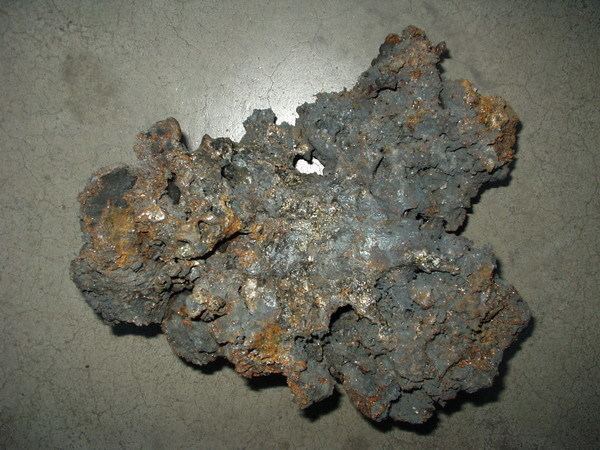 | ||
Tamahagane (玉鋼) is a type of steel made in the Japanese tradition. The word tama means "round and precious", like a gem. The word hagane means "steel". Tamahagane is used to make Japanese swords, knives, and other kinds of tools.
Contents
Good tamahagane contains around 1% of carbon and should not go over 1.5%.
Production
Tamahagane is made of iron sand (satetsu). There are 2 main types of iron sands: acome and masa. Acome is of lower quality and masa is of better quality. The person who decides the amount of the mixing parts is called the murage. Depending on the desired result, the murage mixes one or more types of sands.
The iron sand is put in a tatara, a clay tub furnace. The clay tub measures about 4 feet (1.2 m) tall, 12 feet (3.7 m) long and 4 feet (1.2 m) wide. The tub is then dried and heated. The clay tub is heated to a high temperature, about 1000 °C (1800 °F). Then, it is mixed with charcoal to give tamahagane hardness.
The process of making tamahagane continues for 36 to 72 hours, depending on how many people work and how much metal is to be obtained. The iron sand is added every 10 minutes and the mixture is frequently turned over.
When the tamahagane is finished, the clay tub is broken and the steel is removed. The best steel is on the edges of metal block, because this is where the oxidation process is stronger. The quality of tamahagane is determined by its color: bright silver pieces are very good for making blades.
